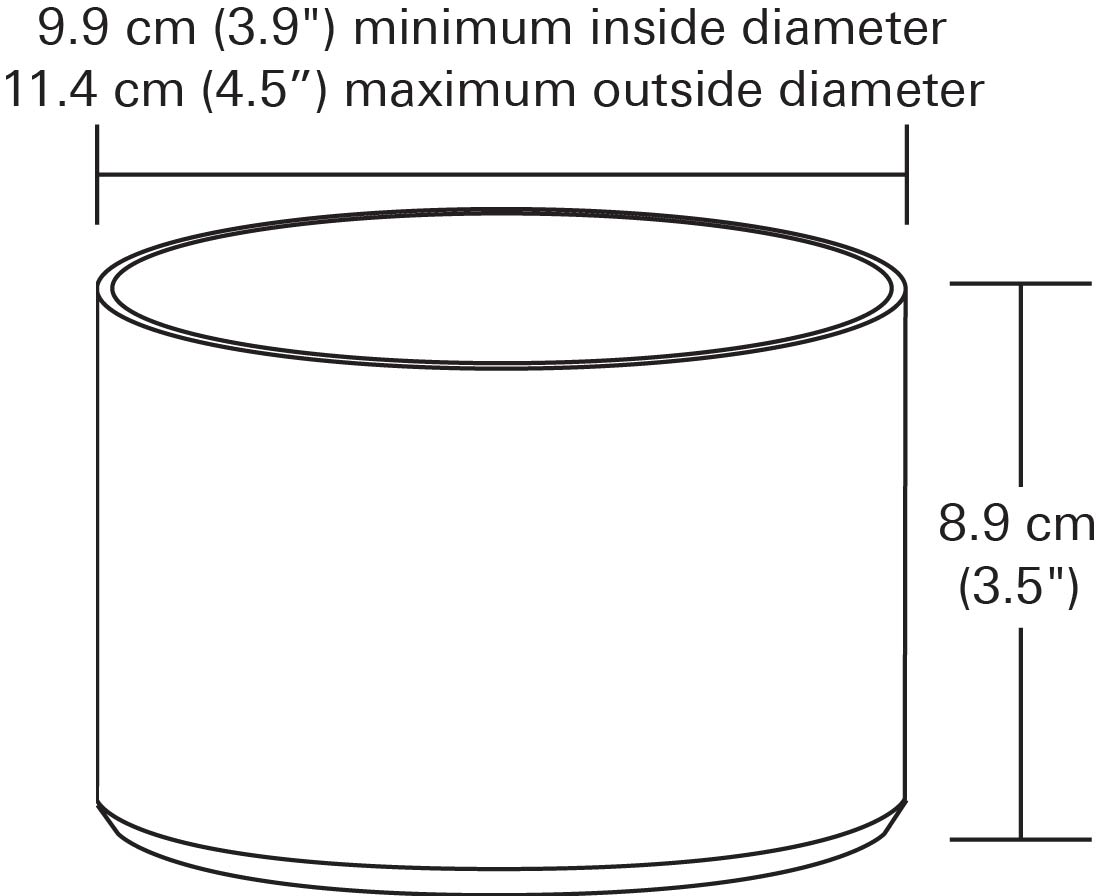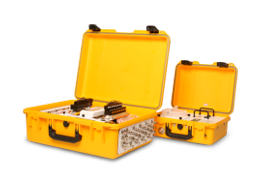This section describes ways to use the LI-8100A that are beyond the basic soil gas flux capabilities. For some applications, we direct you to supplementary documents on the procedure.
Trace gas flux measurements
For gases such as NO2, N2O, CH4, or isotopologues, you can add a trace gas analyzer to the LI-8100A system, log the data in the LI-8100A, and process the data in SoilFluxPro™ software. Download the application note called "Capturing and Processing Soil GHG Fluxes Using the LI-8100A" from the LI-COR support site at licor.com/support/home.html and select the LI-8100A.
Download the Application Note:
https://licor.app.boxenterprise.net/s/zbjt20wkx738drzu19et
Flask measurements
You can configure the LI-8100A and LI-8150 multiplexer to measure gas exchange from discrete samples such as soil samples, fruit, or small animals in flasks or custom chambers. This is described in detail in an application note called "Measurement of CO2 Evolution in a Multiplexed Flask System."
Download the Application Note:
https://licor.app.boxenterprise.net/s/rdt83ib1nlj70zpgrg2r
Profile measurements
You can configure the system to measure concentrations across a vertical or horizontal profile. This is described in the document called "Atmospheric CO2 Profile Measurements Using the LI-8100A/LI-8150 System."
Download the Application Note:
https://licor.app.boxenterprise.net/s/gc4evxucnhzp69eeevg3
Trace gas sampling kit
The trace gas sampling kit (part number 8100-664) is used to collect air samples from the same air stream used by the LI-8100A Automated Soil CO2 Flux System. The collected sample can be analyzed to measure trace gases such as methane (CH4), ammonia (NH3), nitrous oxide (N2O), isotopologues.
Download the Application Note:
https://licor.app.boxenterprise.net/s/od4g3wjp9dgxmr2c9nl8
Chamber control kit
The chamber control kit (part number 8100-401) enables you to use a long-term chamber with a home-made controller and third-party gas analyzer.
Download the Technical Note:
https://licor.app.boxenterprise.net/s/tcikluk3o0cc3foz406o
GPS accessory
The optional 8100-405 CO2 Mapping Kit can be used without a soil chamber in continuous measurement mode to map CO2 concentrations across a transect. You can make a single measurement of up to 24 hours. A user-provided intake tube is required; tubing and fittings are provided in the spare parts kit to aid in construction of the intake tube. Considerations and guidelines for sampling height, intake tube construction, and concentration mapping can be found in Application Note #135, entitled “Mapping CO2 Concentrations and Fluxes with the LI-8100A”.
Download the Mapping Kit Instructions:
https://licor.app.boxenterprise.net/s/xg18h1n174tt08kewk4s
XML communication
You can view the XML monitor in the PC software any time: Click Utilities > XML Monitor. From this window, you can also send XML commands.
XML outputs
Under 8100 > Outputs you can select variables to output to an external data logger or terminal program, either over RS-232 serial or Ethernet communication. The variables available are essentially the same, the difference being that you do not have geographical (GPS) data available over RS-232 because the GPS accessory occupies the RS‑232 port.
There are several options available when configuring the outputs:
Remove XML from data: Select this to remove the markup from the data stream. The resulting data set is a data stream where each value is separated by a space.
Add CRC to data: Select this to enable the Cyclic Redundancy Check (CRC). CRC is an algorithm that is used to verify the integrity of the data. Before each data packet is sent by the LI-8100A, a CRC is calculated (pre-transmission) for that packet, and then appended to the packet. When the client (e.g. the computer) receives the packet, it strips off the appended CRC and calculates its own CRC (post transmission). If the two CRC values match, it is assumed that the packet was transmitted correctly. When CRC values are appended to the data packet, the value is automatically marked up. A typical CRC will appear as
<CRC>3067450353</CRC>
Disable the Add CRC to data check box to remove CRC from the data.
Terminal program
You can also communicate with the LI-8100A using a command line program such as Tera Term. When you communicate with the LI-8100A with a Transmission Control Protocol (TCP) connection, connect with the instrument using the IP Address. The LI-8100A uses port number 1562.
If you connect with the RS-232 serial port, simply select the COM port that you used to connect your LI-8100A.
Logging data to a computer
In addition to the data storage available in the LI-8100A, you can also configure logging directly to a personal computer. You will want to configure measurements the same way as for any survey or long-term measurement.
- Click Utilities > PC Data Logging.
- Select the Data Values to log.
- Set the field delimiter. Typically choose Tab.
- Set the Log Frequency (number of measurements per second).
- Start logging—This will begin creating the file. Data will be written to the file until you Stop Logging.
The data file that is created will be delimited text file. You can open it in most text editors or spreadsheets, depending upon the formatting of the logged file.
Making soil collars
You can make your own soil collars with materials that are widely available in the United States. In other countries you may need to special order materials.
10 cm collars
The 10 cm (4 inch) collars are made from thin-walled polyvinyl chloride (PVC) sewer pipe. The pipe must have an inside diameter of 10 cm (3.930 inches) minimum and an outside diameter of 11.4 cm (4.5 inches) maximum. Cut a section approximately 8.9 cm (3.5 inches) or longer, depending on requirements for your measurement. Bevel the bottom edge with a grinder or coarse file.

20 cm collars
The 20 cm (8 inch) collars are constructed from thick-walled 8 inch SDR 35 PVC pipe. Use a grinder, coarse file, or an extremely large lathe to bevel the bottom edge to an angle of 24°.

